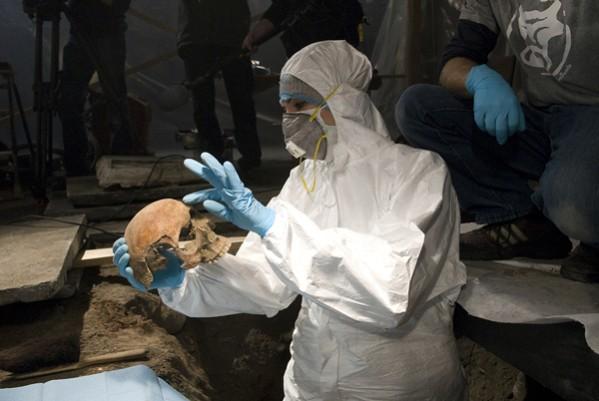
New revelations have been made regarding the Thirty Years' War -- one of the longest and deadliest religious war in European history -- which took place in Central Europe between 1618 and 1648.
Also Read: Moabosaurus: New species of herbivorous dinosaur discovered in Utah's 'gold mine'
Around 9,000 soldiers, who lost their lives in this gore which took place almost 400 years ago, were buried in Lützen, Germany, by locals. The mortal remains of these soldiers were exhumed and examined by researchers which revealed that a majority of the soldiers were killed by gunfire. It was found to be unusual by researchers.
This war took place in the Holy Roman Empire, between Catholics and Protestants. Most of the battles fought in Germany impacted other countries in the Holy Roman Empire.
Not just the battles, famines and diseases were also responsible for most of these deaths.
A mass grave was discovered by the archaeologists in Lützen in 2011. They exhumed the remains from the ground present in a 55-ton block.
So far, the remains of 47 soldiers from the block have been examined by researchers from the State Office for Heritage Management and Archaeology Saxony-Anhalt, PLOS One revealed.
It was found that more than half of these men died of gunfire -- 21 had gunshot wounds in their heads and 11 still had bullets lodged in their skull.
"Although firearms were becoming more readily available, bladed weapons were still the weapons of choice for hand-to-hand combat," said Nicole Nicklisch, the lead researcher.
Bullets were also found in the mouths of two of the skeletons, and the reason behind this is believed to be the common practice soldiers followed back then -- they kept bullets in their mouth on the battlefield so that they could reload their guns faster.
The analysis also revealed that most of the soldiers suffered from various head wounds and bone injuries which had started healing before the final battle.
Also, bits of clothes were found in their graves which revealed that the uniforms of the soldiers were removed before they were buried.
According to the researchers, most of the soldiers found were battling on behalf of the Swedish army. It is also believed that the Catholic army soldiers were buried there by locals in Lützen.
"'It can certainly be assumed that the local population of Lützen did not have a positive attitude towards the fallen soldiers, regardless of any military affiliation. In the Thirty Years' War, every battle brought destruction and deprivation for the rural population," the researchers said.
















